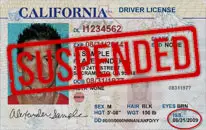So far, ten states and the District of Columbia have legalized marijuana for recreational use. Another several states, equating to more than half of the country, have legalized medical marijuana for certain conditions. Whether they have legalized recreationally or just for medical purposes, all of these states are now grappling with a very real question: When is someone too high to drive? As it turns out, there’s no standard answer for intoxication like there is with alcohol. Even when states have established a “per se” limit, that number may be arbitrary. As more states legalize, the drive to answer that question becomes more important. California Health Online reports on the issue.
In response to all of the states beginning to legalize marijuana for both recreational and medical use, many state legislatures are grappling with the question of when is someone too high to drive?
There’s no easy answer. Both brain scientists and pharmacologists alike have no way currently to measure if and to what extent marijuana causes impairment.
While blood and urine tests can detect marijuana in a person’s systems, the compound THC that causes the euphoric “high” can be detected in the system for a long while after it was smoked. Currently, there is no way to tell if that person smoked a joint that morning or last week.
Some states, such as Colorado, have “per se” laws regarding a threshold for the amount of THC in the blood. Other states, such as Rhode Island, have a strict zero-tolerance for any amount of THC found in a person’s system when they’re driving.
Besides blood testing, some companies are trying hard to get a plausible roadside testing method to the market. There are saliva tests, but even these have their problems.
In California, which has had medical marijuana since 1996, they are relying primarily on the training of police officers to recognize impairment when they pull a driver over. Even this can be subjective and influenced by things such as race and a person’s nervousness.



